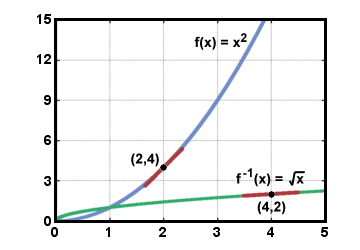Please wait while we process your payment
If you don't see it, please check your spam folder. Sometimes it can end up there.
If you don't see it, please check your spam folder. Sometimes it can end up there.
Please wait while we process your payment

By signing up you agree to our terms and privacy policy.
Don’t have an account? Subscribe now
Create Your Account
Sign up for your FREE 7-day trial
By signing up you agree to our terms and privacy policy.
Already have an account? Log in
Your Email
Choose Your Plan
Individual
Group Discount
Save over 50% with a SparkNotes PLUS Annual Plan!
 payment page
payment page
Purchasing SparkNotes PLUS for a group?
Get Annual Plans at a discount when you buy 2 or more!
Price
$24.99 $18.74 /subscription + tax
Subtotal $37.48 + tax
Save 25% on 2-49 accounts
Save 30% on 50-99 accounts
Want 100 or more? Contact us for a customized plan.
 payment page
payment page
Your Plan
Payment Details
Payment Summary
SparkNotes Plus
You'll be billed after your free trial ends.
7-Day Free Trial
Not Applicable
Renews May 15, 2025 May 8, 2025
Discounts (applied to next billing)
DUE NOW
US $0.00
SNPLUSROCKS20 | 20% Discount
This is not a valid promo code.
Discount Code (one code per order)
SparkNotes PLUS Annual Plan - Group Discount
Qty: 00
SparkNotes Plus subscription is $4.99/month or $24.99/year as selected above. The free trial period is the first 7 days of your subscription. TO CANCEL YOUR SUBSCRIPTION AND AVOID BEING CHARGED, YOU MUST CANCEL BEFORE THE END OF THE FREE TRIAL PERIOD. You may cancel your subscription on your Subscription and Billing page or contact Customer Support at custserv@bn.com. Your subscription will continue automatically once the free trial period is over. Free trial is available to new customers only.
Choose Your Plan
This site is protected by reCAPTCHA and the Google Privacy Policy and Terms of Service apply.
For the next 7 days, you'll have access to awesome PLUS stuff like AP English test prep, No Fear Shakespeare translations and audio, a note-taking tool, personalized dashboard, & much more!
You’ve successfully purchased a group discount. Your group members can use the joining link below to redeem their group membership. You'll also receive an email with the link.
Members will be prompted to log in or create an account to redeem their group membership.
Thanks for creating a SparkNotes account! Continue to start your free trial.
We're sorry, we could not create your account. SparkNotes PLUS is not available in your country. See what countries we’re in.
There was an error creating your account. Please check your payment details and try again.
Please wait while we process your payment

Your PLUS subscription has expired
Please wait while we process your payment
Please wait while we process your payment

Inverse Functions
Every one-to-one function f has an inverse function f-1 which essentially reverses the operations performed by f.
More formally, if f is a one-to-one function with domain D and range R, then its inverse f-1 has domain R and range D. f-1 is related to f in the following way: If f (x) = y, then f-1(y) = x. Written another way, f-1(f (x)) = x.
Example: f (x) = 3x - 4. Find f-1(x).
The procedure for finding f-1(x) from f (x) involves first solving for x in terms
of y.
| y | = 3x - 4 | ||
| x | =  |
Now switch the variables x and y in the equation to generate the inverse:
| y | =  | ||
| f-1(x) | =  |
A function and its inverse are related geometrically in that they are reflections about the line y = x:

Thus, if (a, b) is a point on the graph of f, then (b, a) is a point on the graph of f-1.
Drawn below is the graph of f (x) = x2 on the interval (0,∞), and its inverse on
that interval, f-1(x) =  . Also drawn on the graph are the tangents to the graph of f (x) at (2,4), and the
tangent to the graph of f-1(x) at the reflected point (4,2).
. Also drawn on the graph are the tangents to the graph of f (x) at (2,4), and the
tangent to the graph of f-1(x) at the reflected point (4,2).

What is the relationship between f (x) at (a, b) and f-1(x) at (b, a)?
In the case above, f'(x) = 2x and (f-1)'(x) =  It seems that at least in this case, the derivative of f at (a, b) is the reciprocal of the
derivative of f-1 at (b, a). This in fact holds true in all cases. In general, it can be
said that if (a, b) is a point on f then (b, a) is a point on f-1, and (f-1)'(b) =
It seems that at least in this case, the derivative of f at (a, b) is the reciprocal of the
derivative of f-1 at (b, a). This in fact holds true in all cases. In general, it can be
said that if (a, b) is a point on f then (b, a) is a point on f-1, and (f-1)'(b) =  .
.
To make this statement even more applicable, we should now try to find a formula for (f-1)'(x). From the formula above, if we let b = x, then a = f-1(x), so that the following more general statement may be written:
(f-1)'(x) =  |
Note that in Leibniz notation, this becomes an intuitive:
 = =  |
Please wait while we process your payment

